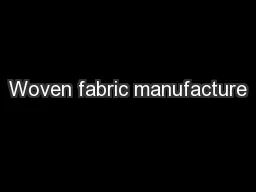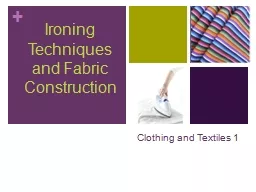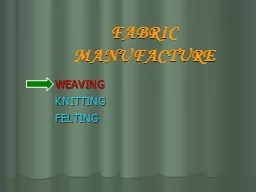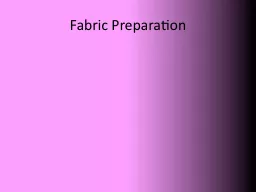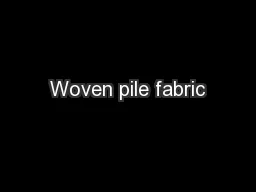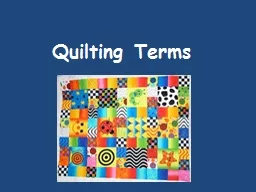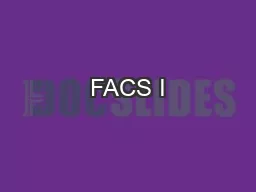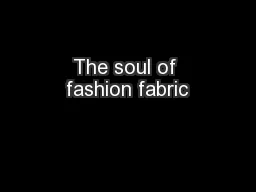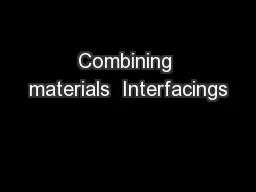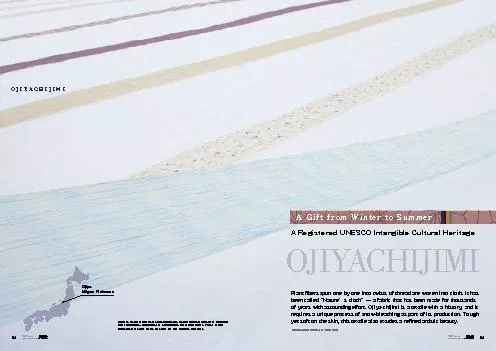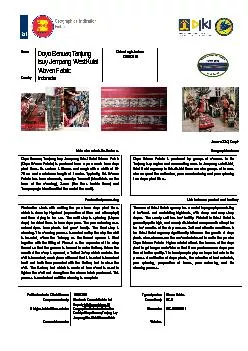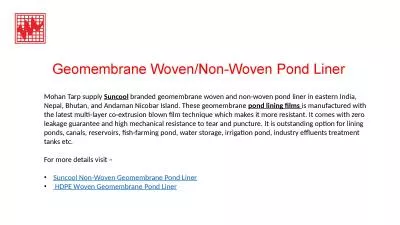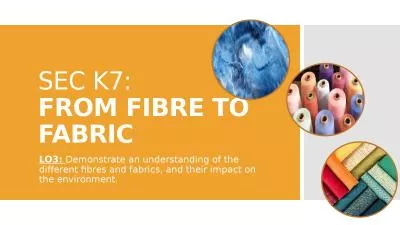PPT-Woven fabric manufacture
Author : tawny-fly | Published Date : 2015-11-16
Woven fabrics are made by interlacing two sets of yearns together at right angles to each other httpwwwtikpcoukknowledgetechnologywarpingandweavingweavingprocess
Presentation Embed Code
Download Presentation
Download Presentation The PPT/PDF document "Woven fabric manufacture" is the property of its rightful owner. Permission is granted to download and print the materials on this website for personal, non-commercial use only, and to display it on your personal computer provided you do not modify the materials and that you retain all copyright notices contained in the materials. By downloading content from our website, you accept the terms of this agreement.
Woven fabric manufacture: Transcript
Download Rules Of Document
"Woven fabric manufacture"The content belongs to its owner. You may download and print it for personal use, without modification, and keep all copyright notices. By downloading, you agree to these terms.
Related Documents

